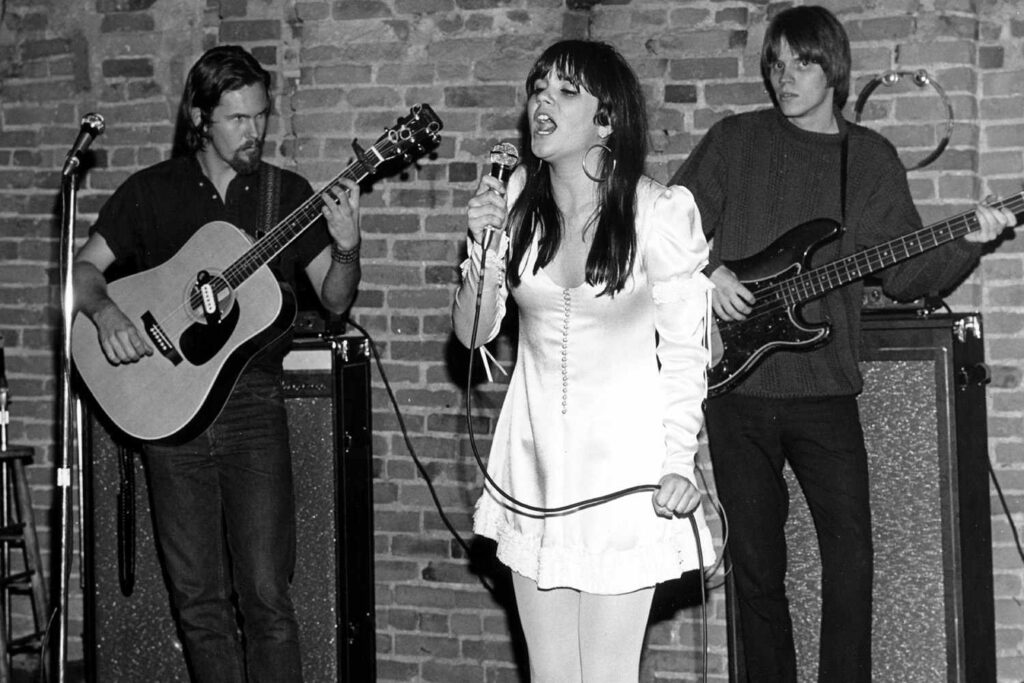
“Maybe I’m Right” — a quiet admission of doubt, set to a confident groove; the sound of conviction learning to live with uncertainty
In 1977, at the very height of her powers, Linda Ronstadt slipped “Maybe I’m Right” onto side two of her blockbuster album Simple Dreams—a three-minute spark written by guitarist Waddy Wachtel that hums like late-night freeway neon. The album bowed on September 6, 1977, and soon became a phenomenon, spending five consecutive weeks at No. 1 on the Billboard 200 in December and topping the country albums chart as well. Though “Maybe I’m Right” wasn’t pushed as a U.S. single, it rode in the slipstream of that cultural moment: radio saturated with Ronstadt’s voice, arenas full, and Simple Dreams turning into one of the defining LPs of the late ’70s. On some overseas pressings, notably in Australia, the track even appeared as the B-side to her hit “It’s So Easy,” a single that climbed into the U.S. Top 5.
The song itself is deceptively simple. Wachtel’s hook moves with a clean, taut swing—no wasted gestures—while the lyric circles a private argument: maybe he’s right, maybe I’m wrong; maybe I’m right. That flicker of doubt, then that half-smile of resolve. Ronstadt leans into the paradox with trademark clarity—firm on pitch, warm in grain—so the refrain feels less like indecision than wisdom, the kind learned when life stops offering easy answers. The credits bear Wachtel’s name alone; you can hear his touch in the crisp guitar figure and the way the band keeps air around the vocal, letting Ronstadt’s phrasing do the emotional heavy lifting.
Context matters. Simple Dreams plays like a panorama of American song—Buddy Holly to Warren Zevon, Roy Orbison to Jagger/Richards—curated and animated by Ronstadt and producer Peter Asher. Nestled among the showpieces—“Blue Bayou,” “Poor Poor Pitiful Me,” “Tumbling Dice,” “It’s So Easy”—“Maybe I’m Right” acts as a palate-cleansing interior monologue, a smaller room inside a grand house. The album’s commercial run was astonishing: after its September release, it dislodged Rumours from the top of the Billboard chart and held the summit for the last five weeks of 1977. In that glow, even the deep cuts became part of listeners’ daily weather, and this one, with its measured pulse and candid lyric, felt like a companion for the quieter hours.
If you want a chart number directly tied to this recording, the truth is plain: “Maybe I’m Right” didn’t register independently on U.S. singles charts. But the album that carried it was a No. 1 juggernaut, and in Australia the song rode the grooves of a 7-inch with “It’s So Easy,” itself a Top-Five U.S. hit. Those facts sketch the release-day reality: a track not built to dominate radio on its own, yet stamped into memory because it lived on one of the era’s most ubiquitous LPs.
Meaning? It’s there in the title’s gentle feint. The singer entertains opposing truths—maybe he’s right / maybe I’m wrong—and then edges back to self-trust. That’s not fence-sitting; it’s grown-up love talking, the kind that knows certainty can bruise and that tenderness sometimes lives in the word maybe. Ronstadt gives the lines a conversational lift, never forcing a grand statement; she sounds like someone turning a thought over in her hands until it shines. The band follows suit: tight, economical, a little sun-baked in tone, like the metallic shimmer of Los Angeles dusk.
For many longtime listeners, “Maybe I’m Right” holds a particular charm because it reveals how Ronstadt could make even a modest album cut feel lived-in and necessary. The big singles painted the billboards in bright color; this one wrote in the margins of your diary. In a record that could have coasted on bravura, she lets a slighter song breathe—and in doing so, she honors the small recognitions that make love survivable: the pause before an apology, the laugh that breaks a stalemate, the humility to concede a point and still hold your ground.
Spin it now, and you may hear what made Simple Dreams such a lasting companion: the balance of spectacle and soul. “Maybe I’m Right” doesn’t settle the argument; it humanizes it. And in Ronstadt’s poised delivery—clear as glass, warm as afternoon sun—you can feel the era again: a time when albums ruled the room, when side two could hide a little truth you wouldn’t have met any other way.